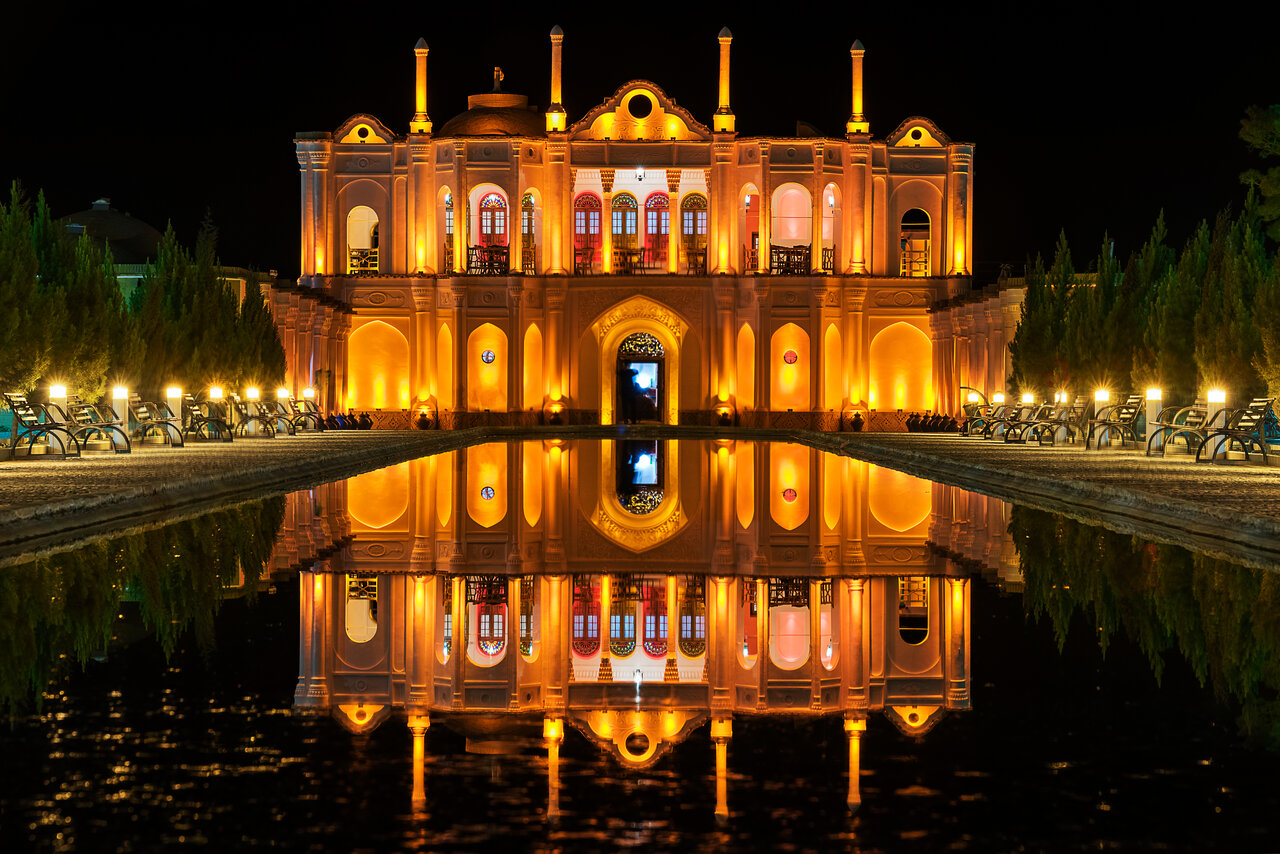Fathabad Garden: Kerman’s overlooked Qajar masterpiece

TEHRAN - Nestled in the arid expanse of Kerman province, Fathabad Garden, also known as Bag-e Biglarbeigi, stands as a stunning testament to the grandeur of Persian garden design.
The stunning vast garden is a relic of the Qajar dynasty and is often overshadowed by the more famous Shahzadeh Garden of Mahan. However, Fathabad Garden’s historical significance and unique charm make it a must-visit destination for those exploring the rich cultural heritage of Iran.
Located in the Ekhtiarabad district, Fathabad Garden is part of the larger concept of the Persian Garden, which is inscribed on the UNESCO World Heritage list. Persian gardens are renowned for their ingenious blend of natural beauty and architectural elegance, designed to provide a sense of paradise on Earth. And according to many sightseers and experts, Fathabad Garden is a perfect embodiment of this tradition.
According to Visit Iran, the garden’s construction began in 1803 under the order of Fazlali Khan Biglarbeigi, the ruler of Kerman during the reign of Mohammad Shah Qajar. The project took five years to complete, with the garden finally opening in 1808. During its early years, Fazlali Khan cultivated pistachios on the surrounding land and processed them within various parts of the garden. This integration of agriculture and leisure is a hallmark of Persian garden design, emphasizing both utility and aesthetic pleasure.
The stunning vast garden is a relic of the Qajar dynasty and is often overshadowed by the more famous Shahzadeh Garden of Mahan.
Throughout the 19th century, Fathabad Garden served as a venue for ceremonies and a retreat for the rulers of Kerman, known as Nosrat ol-Mamalek I and II. However, the garden fell into neglect during the Pahlavi era. In 1973, the garden, then owned by Rostam Khan Amiri, was endowed but received little attention, leading to further decline. The drying up of the garden’s qanat, an ancient underground water channel, marked a significant loss of its former glory.
In 2014, a comprehensive restoration project was initiated to revive Fathabad Garden. By 2015, the garden was reopened to the public and restored to its former splendor. Today, it serves as a vibrant cultural hub, featuring handicrafts exhibitions, syrup shops, tearooms, herbal cultivation and sales, religious and symbolic festivals, restaurants, gazebos, and more.
Covering an expansive thirteen hectares, Fathabad Garden once thrived on the water supplied by its qanat. This ancient irrigation system fed small rivers on either side of the Chaharbagh before flowing into a central pool, or Howz, in front of the pavilion. Although the pool, measuring sixty by six meters, is now empty, it still reflects the grandeur of the main pavilion.
The main pavilion of Fathabad Garden, an architectural marvel, is constructed from cob bricks, clay mortar, and plaster. Located at the northern end of the garden, it features two floors with elegant arches on either side. The pavilion’s design incorporates stucco decorations on the doorways and arches, embodying the aesthetic sensibilities of the Qajar period. Inside, the pavilion houses the Hokkam Museum, which displays photographs and biographies of Kerman’s past rulers, providing visitors with a rich historical context.

One of the pavilion’s most intriguing features is its entry gateway, which includes round holes fitted with convex lenses. These lenses were designed to reflect light into the entrance at night, creating a mesmerizing play of illumination. The gateway also bears Nastaliq calligraphy and religious motifs, with an inscription dating back to 1802, likely marking the garden’s construction date.
A highlight within the pavilion is the Painting Room, once the office of Kerman’s rulers. This room is adorned with intricate paintings and murals, some of which originally contained gold. Unfortunately, parts of these murals were damaged by thieves seeking to steal the gold. Today, these valuable artworks are protected by glass to preserve their beauty and historical integrity.
Beyond the pavilion, the garden features a Miansara, a pathway flanked by rooms leading from the entrance to the private chambers. This pathway underscores the garden’s design, blending utility with aesthetic appeal. Another significant structure is the Chahar Fasl (Four Seasons) Pavilion, located thirty meters from the main pavilion. This building, with its brickwork, stucco, dome, and columned iwans, is now used for various ceremonies, continuing the garden’s tradition as a place of celebration and social gathering.
For history enthusiasts, architecture aficionados, or the ones simply seeking a tranquil escape, Fathabad Garden promises an enriching experience that celebrates the legacy of Persian garden artistry and the enduring spirit of Kerman.
AM
